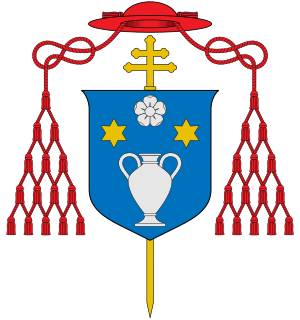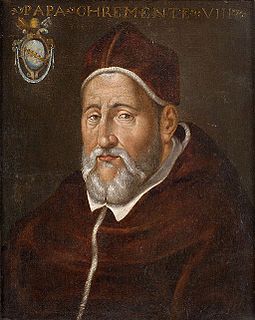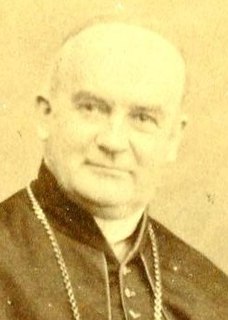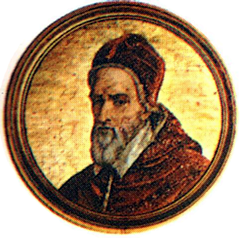
The 1878 papal conclave, which resulted from the death of Pope Pius IX on 7 February 1878, met from 18 to 20 February. The conclave followed the longest reign of any other pope since Saint Peter. It was the first election of a pope who would not rule the Papal States. It was the first to meet in the Apostolic Palace in the Vatican because the venue used earlier in the 19th century, the Quirinal Palace, was now the palace of the King of Italy, Umberto I.
Giulio Gabrielli was an Italian Catholic Church's cardinal. He spent most of his career in the Roman Curia.

Benedetto Aloisi Masella was an Italian Cardinal of the Roman Catholic Church who served as Prefect of the Discipline of the Sacraments from 1954 to 1968, and as Chamberlain of the Roman Church from 1958 until his death. Aloisi Masella was elevated to the cardinalate in 1946 by Pope Pius XII, whom he designated to canonically crown Our Lady of Fatima.

Camillo di Pietro J.U.D. was an Italian Cardinal of the Roman Catholic Church and both Camerlengo of the Sacred College of Cardinals and later Camerlengo of the Holy Roman Church.

Bonaventura Cerretti was an Italian cardinal of the Roman Catholic Church. He served as Prefect of the Supreme Tribunal of the Apostolic Signatura from 1931 until his death, and was elevated to the cardinalate in 1925.
Augusto Silj J.U.D. was a Cardinal of the Roman Catholic Church who served as Prefect of the Supreme Tribunal of the Apostolic Signatura. He was the cousin of Cardinal Secretary of State Pietro Gasparri (1852-1934).

Costantino Patrizi Naro JUD was a long-serving Italian Cardinal who became Dean of the College of Cardinals. Cardinal Benedetto Naro was his great-uncle.
Francesco di Paola Cassetta was an Italian Cardinal of the Catholic Church who served as Prefect of the Sacred Congregation of the Council from 1914 until his death, and was elevated to the cardinalate in 1899.

Giovanni Simeoni was an Italian Cardinal of the Roman Catholic Church who served as Prefect of the Sacred Congregation for Propagation of the Faith from 1878 until his death, and was elevated to the cardinalate in 1875.

Serafino Cretoni was an Italian Cardinal of the Roman Catholic Church who served as Prefect of the Sacred Congregation of Rites from 1903 until his death, and was elevated to the cardinalate in 1896.
Carlo Laurenzi was an Italian Cardinal of the Roman Catholic Church who served as Prefect of the Sacred Congregation of Rites from 1889 until his death, and was elevated to the cardinalate in 1884.

Niccolò Marini was an Italian Cardinal of the Catholic Church who served as secretary of the Congregation for the Oriental Churches from 1917 to 1922, and was elevated to the cardinalate in 1916.

Gaetano Aloisi Masella was an Italian Cardinal of the Roman Catholic Church. He was elevated to the cardinalate in 1887 and served as Prefect of the Congregation of Rites from 1899 until his death.

The 1758 papal conclave, convoked after the death of Pope Benedict XIV, elected Cardinal Carlo Rezzonico of Venice, who took the name Clement XIII.

The 1592 papal conclave elected Pope Clement VIII in succession to Pope Innocent IX.

The 1774–75 papal conclave, was convoked after the death of Pope Clement XIV and ended with the election of Cardinal Giovanni Angelo Braschi, who took the name of Pius VI.

Niccola Clarelli Parracciani was a Catholic Cardinal and was Arch-Priest of St. Peter's Basilica at the Vatican.

Antonio Maria Cagiano de Azevedo was a Catholic Cardinal and held a number of significant legal positions within the Catholic Church during the 19th century.

The October to December 1590 papal conclave was the second conclave of 1590, and the one during which Gregory XIV was elected as the successor of Urban VII. This conclave was marked by unprecedented royal interference from Philip II of Spain.

Vincenzo Maria Altieri (1724–1800) was an Italian Roman Catholic cardinal from 1777 to 1800. He belonged to the Altieri family, one of the noble families of Rome.















